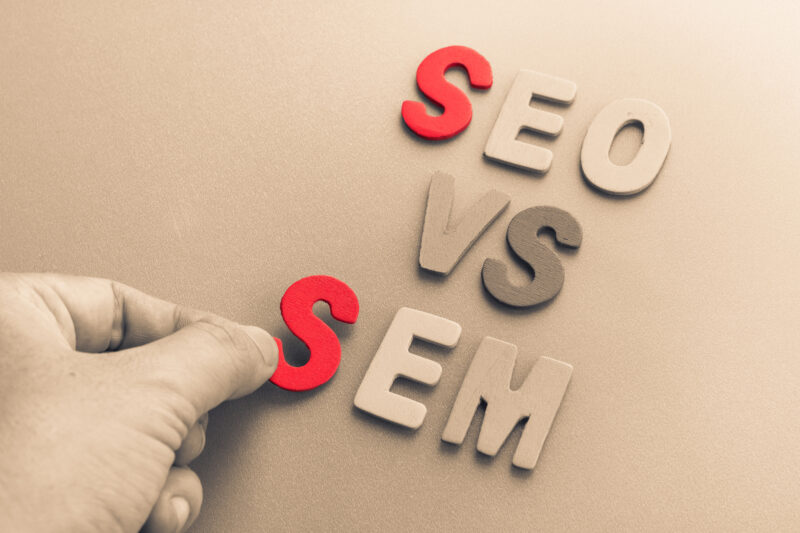SEO, SEM, SERP, CTR, PPC; all these marketing terms look like alphabet soup and are enough to make your head swim! It might have you feeling hopeless, but not to worry, as they’re not that complicated once you break them down.
One of the most important terms in digital marketing is SEO, so we’re here to explain it to you. Another term you might be curious about is SEM, which we’ll also discuss and contrast with SEO.
Here’s the difference between SEO and SEM, as well as how each can benefit you!
What Is SEO?
“SEO” is short for “search engine optimization”. This is where you optimize your website to show up at the top of the search engine page results (SERPs).
How? Most people focus on using good keywords, having good data security, making their site mobile-friendly, and having it load as quickly as possible.
There are 3 types of SEO: technical, on-page, and off-page. Also, some people will choose to focus on local SEO, while others focus on international SEO. It just all depends on where your target audience is.
The most important thing about SEO is that all traffic is organic, meaning it’s not paid for.
What Is SEM?
“SEM” stands for “search engine marketing”. The main goal is also to boost your site to the top of SERPs, but it’s mainly done through paid advertisements.
One common type of paid advertisement used in SEM is PPC, or pay-per-click marketing. This is where you pay a publisher to potentially run your ads whenever people search certain keywords. If your bid is the highest, then your ad will be displayed to them instead of your competitors’.
As the name suggests, you won’t pay for the advertisement unless someone clicks it. This gives you much better control over your marketing budget.
The Difference Between SEO and SEM
As you can see, the biggest difference between SEO and SEM is that one is organic and one is paid. However, that doesn’t necessarily mean one’s better than the other.
Organic traffic can be tough to build up, and not to mention, slow. Paid traffic can be a fantastic way to quickly boost interest in your brand and bring views (and possibly purchases) in.
Also, it can be difficult to measure ROI (return on investment) for SEO while things are more concrete and measurable with SEM.
As a result, it can be an optimal strategy to combine the two!
SEO vs SEM: They Should Work Together
Now that you know the difference between SEO and SEM, it should be clear that one strategy doesn’t beat out the other. Instead, it’s good to experiment with both. After all, you shouldn’t put all your eggs in one basket.
By having both organic and paid traffic come to your website, you’ll be able to maximize your outreach to potential customers!
For more ideas on how you can market your business better, why not check out our blog page?



